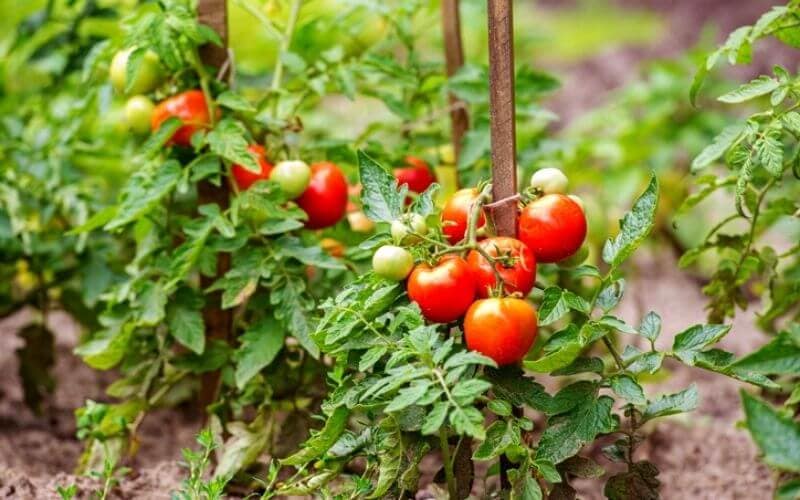
There is no other vegetable spacing I agonize over more than Tomatoes. So spacing tomato plants just right will help you get the best harvest possible.
So, how far apart to plant tomatoes in a vegetable garden? General guidelines suggest planting tomatoes anywhere between 18 and 24 inches apart. But the right spacing depends on the variety of tomatoes you are planting, and on where you’re planting, whether in the ground, in a raised bed or in containers.
Keep reading to find out more specific information on just how far apart you to plant tomatoes and the reasons why spacing for tomato plants is important.
Reasons To Plant Tomatoes Apart
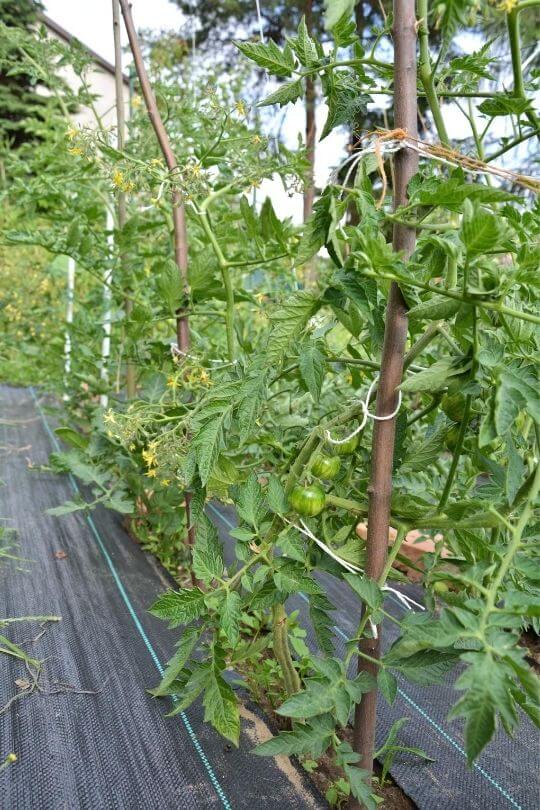
There are a number of reasons to space your tomatoes correctly. These reasons include:
Health Of The Tomato Plant
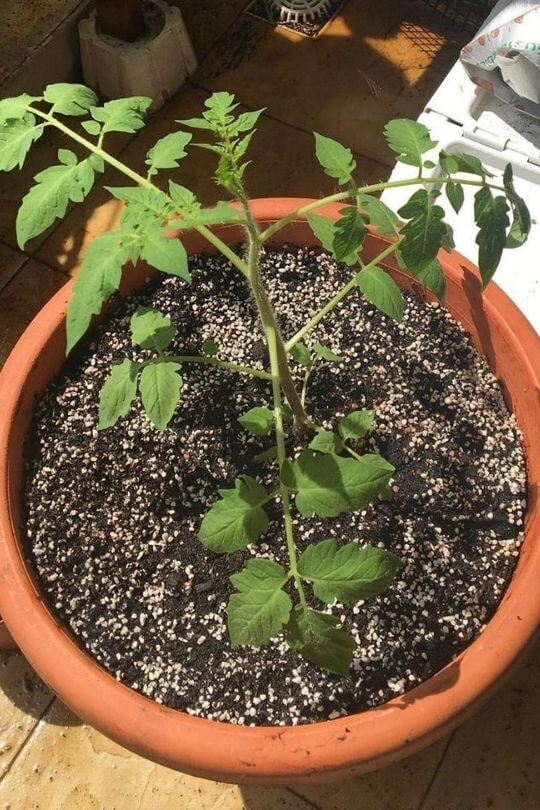
The most important reason to plant your tomatoes apart is for the health of the tomato plants. When plants are placed too closely together, it increases the risk of disease.
Many diseases that affect tomatoes flourish on wet leaves which cannot dry out thoroughly when the plants are too close together.
Keeping the tomato plants a good distance from each other will ensure the leaves can dry out. Also, leaving space between the plants will reduce the transfer of bugs from one plant to another, which will reduce the amount of bug infestations that occur.
Tomato plants need good airflow between them to prevent both diseases and bug infestations.
Lighting Needs Of The Tomato Plant

Tomatoes love sunshine. But when the plants are incorrectly spaced, the sun cannot reach all of the plant’s leaves.
The plant cannot thrive because it cannot absorb enough of the sun’s energy to convert to energy for the plant to grow.
Plants that are shaded out by other plants may grow long and stringy, rather than compact and bushy.
The leaves of the plants will be a pale green color rather than a rich, healthy green color. When the plant does produce tomatoes, they may not ripen effectively.
Nutrient Needs For Each Individual Plant
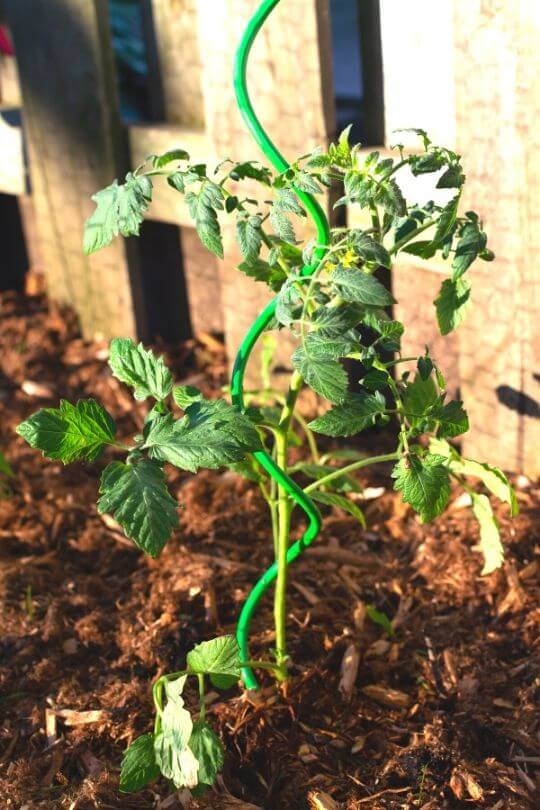
It is no secret that tomato plants need water and nutrients from the soil to grow. But when tomato plants are placed too closely together, they will have to fight to receive enough nutrients.
If the plants do not get enough nutrients from the soil, they will be weak, more susceptible to disease, and will not produce as much fruit.
These plants will also be more susceptible to the effects of bug infestations. Plants that do not have enough water will wilt and eventually die.
Spacing your tomato plants properly will ensure that each plant has enough access to the nutrients and water it needs to grow and thrive.
Overall Production Of Fruit
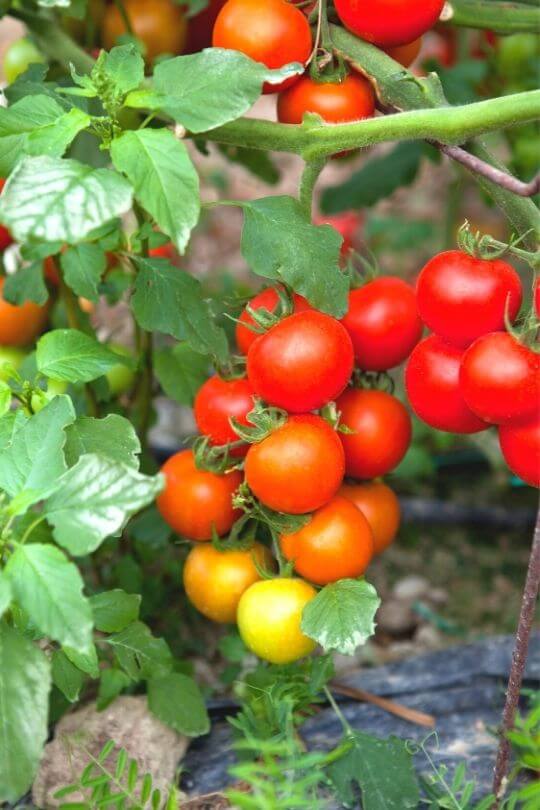
Overcrowding affects the fruit production of your tomatoes as well. If your plants are too close together, the leaves will be small and the stems will be scraggly and weak.
Worse yet, there will be fewer flowers growing on each plant.
Less flowers means there are less tomatoes and weakened stems won’t be able to support the fruits that do grow, leading to fruit loss.
Overcrowding can also reduce pollination, so even if there are enough flowers on your plants, the pollinators may not be able to find them, resulting in lower fruit set.
Accessibility Of Your Tomato Plants
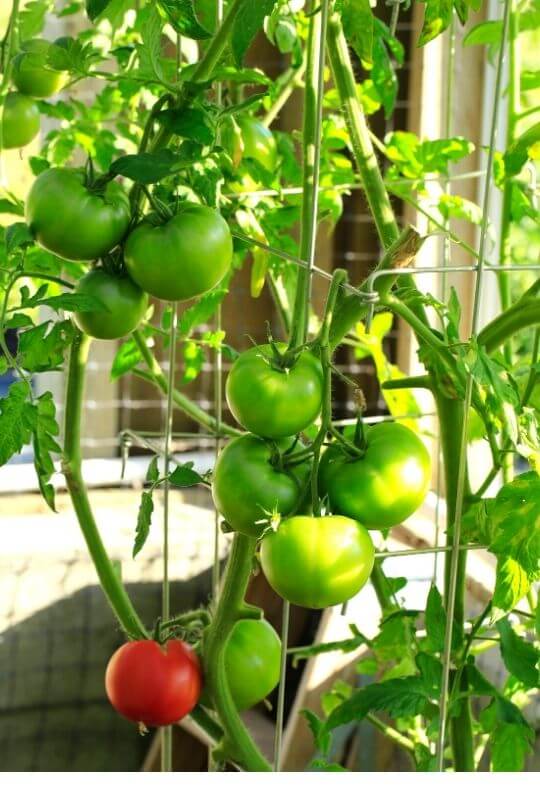
A very practical reason to space apart your tomato plants is simple accessibility. You need to be able to reach each tomato plant to check its health, look for bugs, remove suckers, prune, stake, and harvest the tomatoes.
If your tomato plants are too close together, you won’t be able to manage the regular needs of the plant. You run the risk of breaking or crushing the plants or fruit when you do try to reach in and harvest or stake the plant.
Several factors will affect how far apart you plant your tomatoes.
Tomato Type: Determinate or Indeterminate
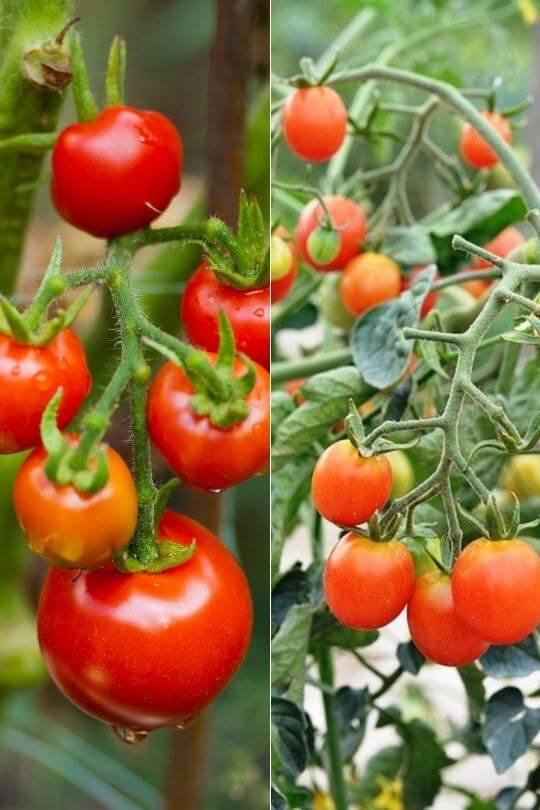
Determinate Tomato Varieties
Determinate tomato plants are more compact and are can be grown in a cage or without any extra support because the plants are smaller and more compact.
These plants are usually the best choice for containers because they don’t need as much room. Determinate tomato plants have a shorter growing season and will usually produce fruit earlier in the year and then the plants will be ‘spent’ or finished.
Planting determinate tomatoes means you will need about one and a half to two feet in between your tomato plants in each row. You will need to space your rows two to three feet apart.
Indeterminate Tomato Varieties
Indeterminate tomato plants tend to grow a little more slowly, but they need much more space. These are the types of tomatoes that are staked because it is hard to tell just how big they will get.
Although it takes longer for these plants to produce fruit, they will continue to grow and produce fruit until frost. They have a much longer growing season.
When planting indeterminate varieties, if you grow them on a trellis, you can place them closer together because you are taking advantage of the vertical space available.
Plant your tomatoes one and half to two feet apart in each row.
If you are going to grow your indeterminate tomato plants in wire cages, place them two and a half to three feet apart.
You’ll be able to take advantage of some vertical space, but you will also need some horizontal space as well.
If you allow your indeterminate tomatoes to sprawl out on the ground, you’re going to need a good three to four feet of spacing in between plants because they will take up much more horizontal space than vertical.
How Far Apart To Plant Staked Tomatoes

According to P. Allen Smith, if you stake your indeterminate tomatoes, you will want to plant them about 24 inches apart in your rows. This will keep them growing in an upright habitat, so they take up less space in your garden.
However, if you are going to allow them to sprawl without being staked, you’re going to need more space between them so they have more room to grow.
Because these plants get as much as eight feet tall, you’ll need to give them a good 36 to 48 inches between each plant in a row so that it has room to stretch out and grow.
Space your rows four feet apart so you have room to walk between them, care for the plants, and be able to harvest your tomatoes easily.
If you have plenty of space in your garden, you can allow them to sprawl out and wander. Anywhere the plant touches the ground, it will put out roots to gain extra nutrients from the soil.
However, if you do not have the space to allow your tomatoes to ‘free range,’ you’ll definitely want to stake them so you can plant them a little closer together.
How Far Apart To Plant Caged Tomatoes
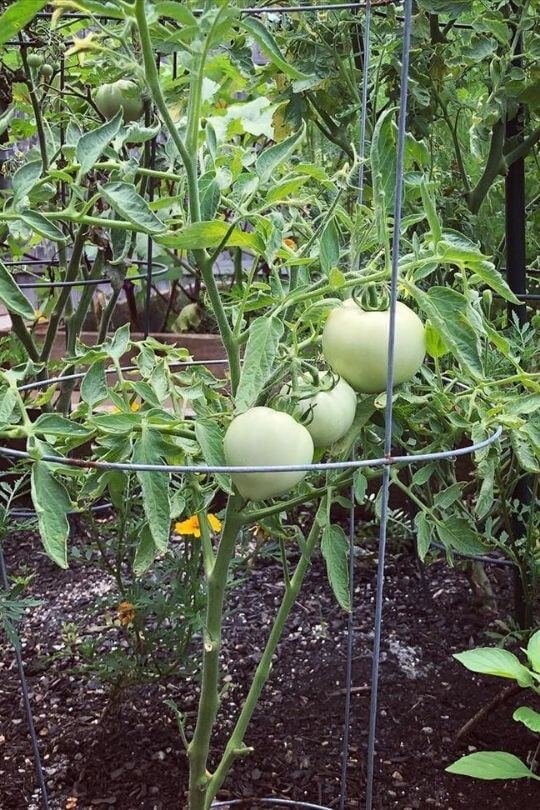
Cages are best used for determinate tomatoes, because they will pretty much only grow to a certain or pre-determined height.
Usually, determinate tomatoes grow to a height of about two to four feet high, depending on the variety. Because of this, you’ll be able to select the right size tomato cage for the type of tomato you are growing.
Determinate tomatoes can be planted about two feet apart in cages with your rows spaced around four feet apart.
This gives you plenty of room to work around your tomatoes. Otherwise, you risk breaking your tomato plants when you try to reach in and harvest or prune.
Tomato Spacing by Plant Variety
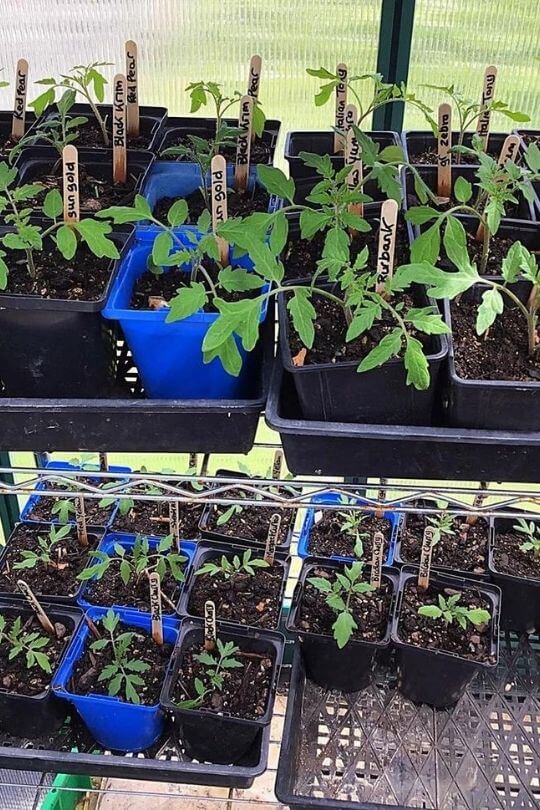
The variety of tomato you plant can also affect your spacing needs. Indeterminate tomatoes are usually heirloom varieties. These are the varieties that need the most space in your garden. Determinate varieties are generally hybrids, which have been bred to create certain characteristics, such as smaller size.
These more compact types need less space, as previously mentioned. There is a third type of tomato plant, a dwarf variety. These are the most compact plants, and they can be either determinate or indeterminate.
Dwarf varieties of tomato plants generally only grow two to four feet high, but they produce tomatoes that are just as large as their bigger plant cousins. They may even have higher yields of fruit because more of their energy is directed into fruit production.
Another benefit of growing a dwarf variety of tomato plants is that they can be grown even closer together. Dwarf varieties of tomatoes that are staked or caged can be grown as close as one foot apart.
Most seed packets will give you specific recommendations on how far apart to plant your tomatoes.
However, here is a quick guide on tomato spacing depending on the type of tomato plants you are growing.
Indeterminate Varieties
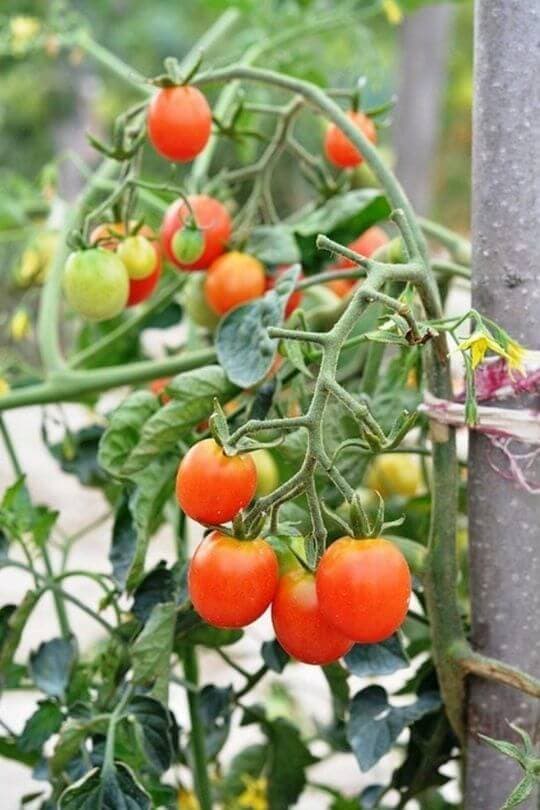
Determinate Varieties
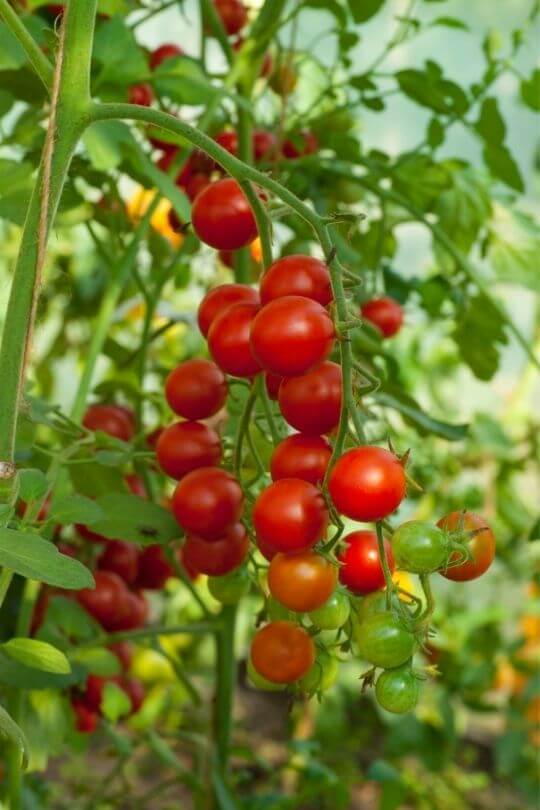
Determinate tomatoes need one and half to two feet between plants and two to three feet between rows.
Container Varieties
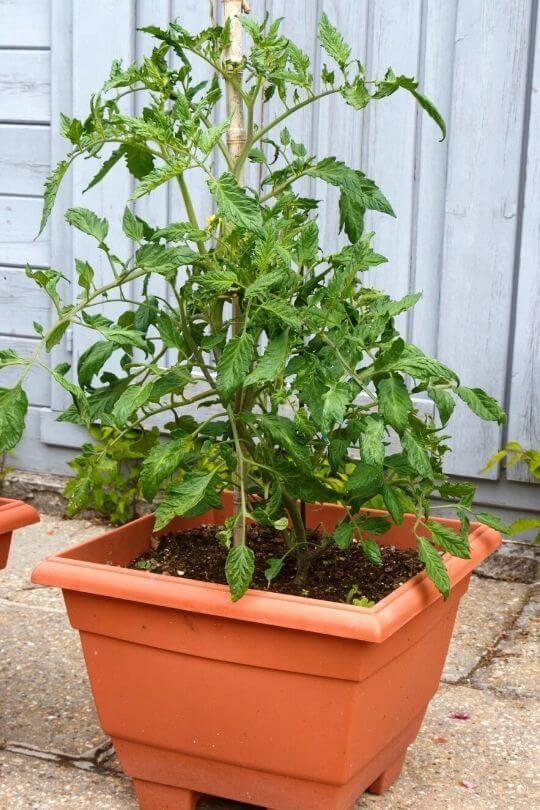
Container tomatoes should be grown in pots that hold at least 5 gallons. Pots can be placed as closely together as you would like.
Tomato Plant Spacing By Garden Type
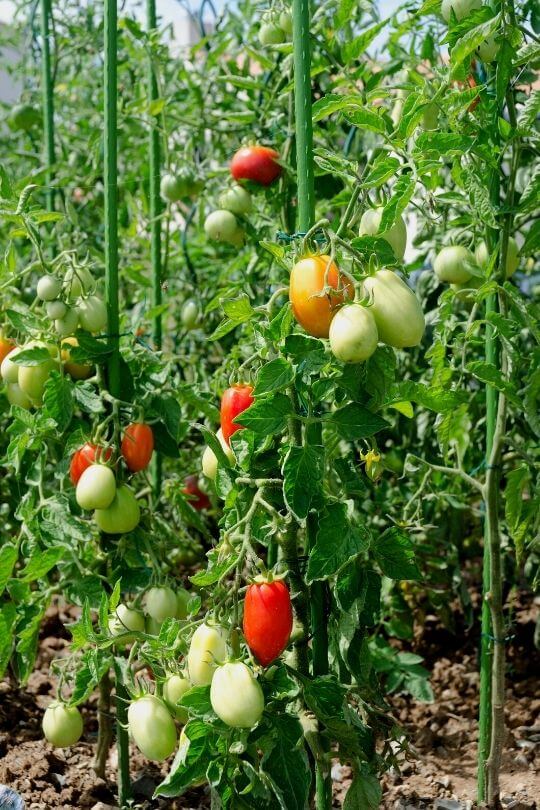
Your garden type will also be a determining factor in how far apart you can plant your tomatoes. Common types of gardens are:
Traditional Row Garden
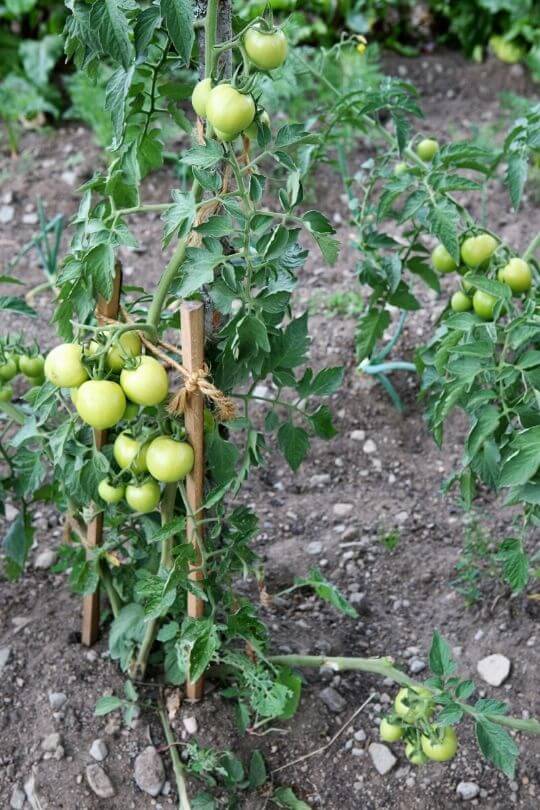
In a traditional row garden, plants are planted in rows. Your tomato plants will be spaced anywhere from 12 inches to 48 inches apart in each row, depending on the factors previously discussed.
Rows should be kept to about 4 feet apart in order to facilitate access to the tomatoes and to give them plenty of room to grow and good air circulation. These gardens tend to need the most space.
Raised Bed Garden
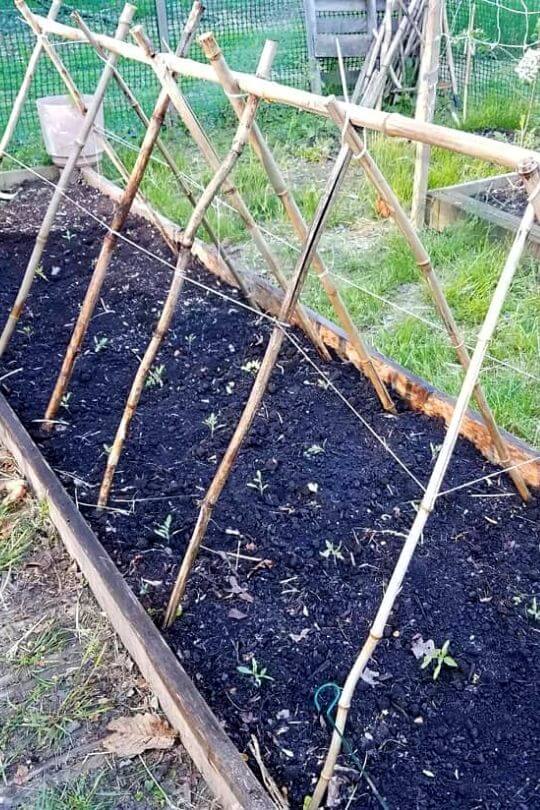
Raised bed gardens are a way to save space. Bonnie plants suggests building a four foot by four foot frame and filling it with quality raised bed soil.
This will give your plants access to plenty of nutrients so they don’t have to fight for survival.
Plant a large staked or caged tomato in each corner of the bed and fill in the other space with smaller herbs.
This will make better use of the soil in your garden and the space you have available. You won’t need to worry about row spacing because the plants can spill over the edges of the bed without competing for space.
Square Foot Garden
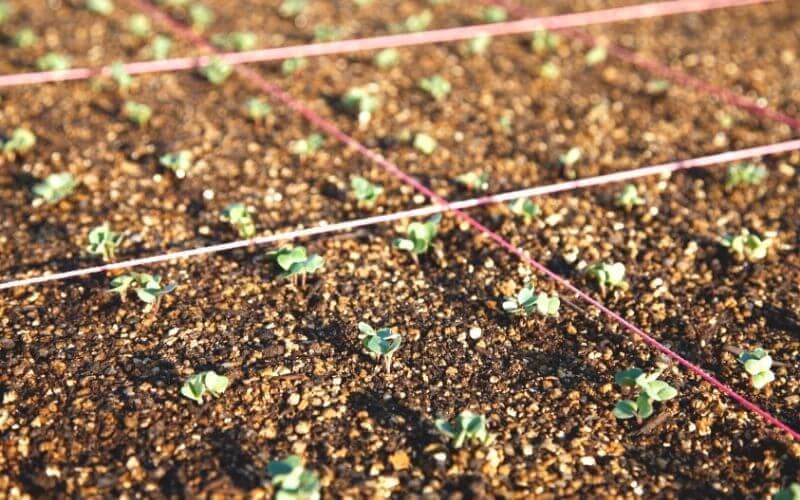
In a square foot garden, spacing is done in one foot sections instead of rows. You can take the space you need to grow your tomato plants and divide it equally.
For example, if your determinate tomato plant needs 2 feet between plants and 4 feet between rows, each plant will need about 8 square feet to grow.
Rather than spacing your plants in smaller sections and larger rows, you can even out the distance by planting one plant in each 8 square foot section.
This works because it allows for air flow and nutrient needs without crowding the plants.
However, you do need to be able to access the plants so you are limited by the number of square foot sections by what you are able to reach.
Container Gardening
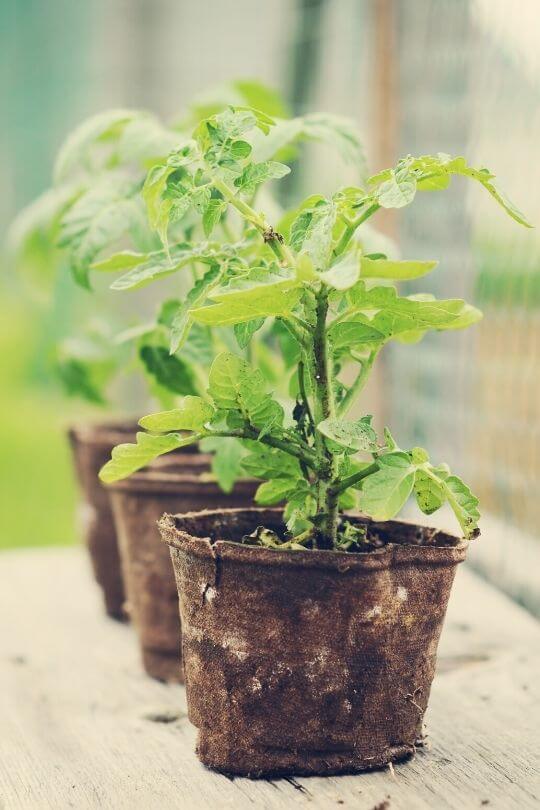
Container gardening works best for determinate and dwarf varieties of tomatoes. Each plant will grow happily in its own large pot. The benefit to container gardening is that you can place the containers as close together as you like.
The plants will not compete for soil and nutrient since they all have their own pot or bucket.
If you cannot reach all of the tomatoes, simply move the containers that are in the way without damage to the plants. Container gardening is great when you are short on space or do not have a garden at all.
If you are planting your tomatoes in containers, they will grow just fine! But be sure to plant them in pots that have are at least five gallons in size and fourteen inches in diameter.
Larger pots are even better. You can set the pots side by side just as you would plant them in the garden.
The Effect of Soil on Tomato Spacing
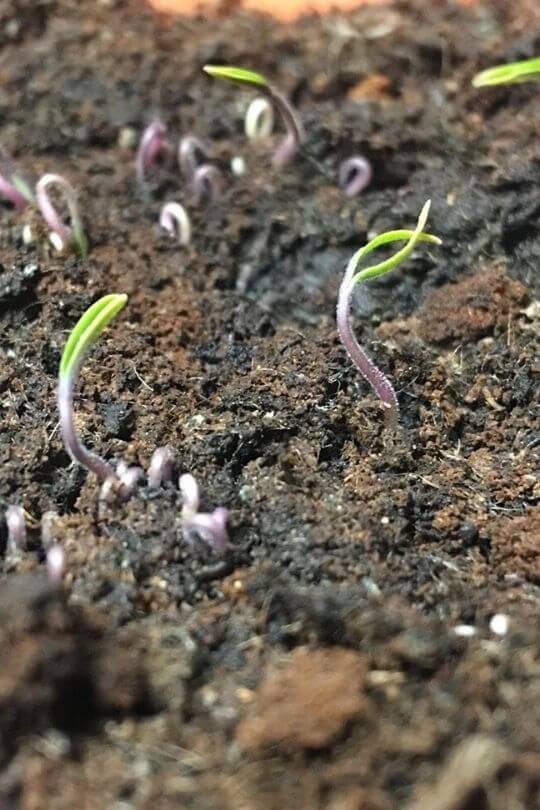
If you have high quality, nutrient dense, loamy soil, you might be able to get away with planting your tomato plants a little bit more closely together because the soil has plenty of life-sustaining qualities.
However, if your soil is poor, hard clay, or very dry, you may need to plant your tomatoes even further apart to give them the best chance to thrive under the conditions that you have.
In Conclusion
In short, tomato plants that are planted too closely together will be more susceptible to disease and more susceptible to bug infestations. They will not be as healthy or strong and they will not grow as much fruit. The fruit they do grow will be difficult to access.
Tomato plants that are planted further apart will be healthier, stronger, and will grow more, bigger fruit. Spacing depends on variety, type, soil condition, and method of staking. When in doubt, keep your tomato plants further apart.
If you do not know what type of tomatoes or soil you have, keep your tomato plants four feet apart between plants and keep four feet of space between your rows.
This will give you a better chance of having thriving, healthy plants with an abundance of tomatoes.

Written By
Amber Noyes
Amber Noyes was born and raised in a suburban California town, San Mateo. She holds a master’s degree in horticulture from the University of California as well as a BS in Biology from the University of San Francisco. With experience working on an organic farm, water conservation research, farmers’ markets, and plant nursery, she understands what makes plants thrive and how we can better understand the connection between microclimate and plant health. When she’s not on the land, Amber loves informing people of new ideas/things related to gardening, especially organic gardening, houseplants, and growing plants in a small space.

I now have read a cple of Your Articles. The Articles were both informative and of practical use. Thanks for Your Time and Effort to write these Gardening Articles, particularly ones about Tomatoes.
I’m so glad to hear that 🙂